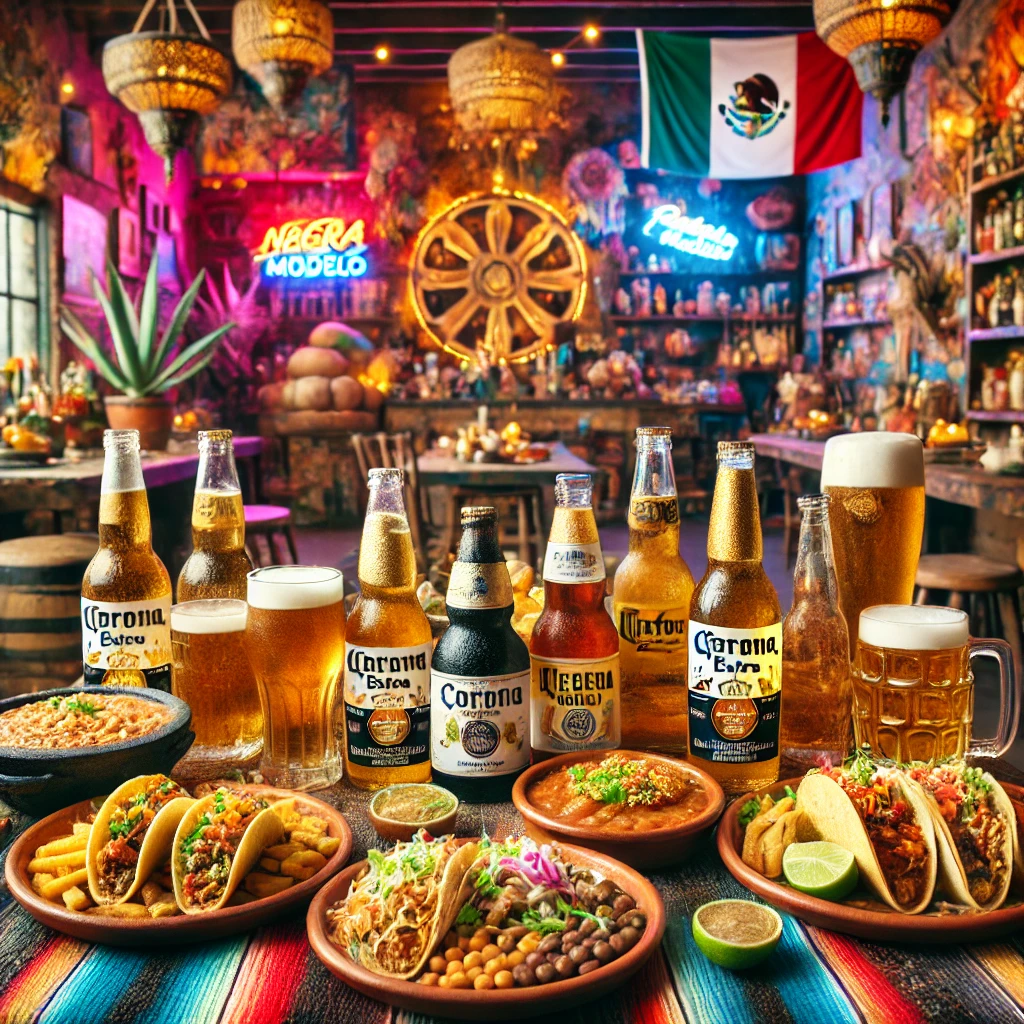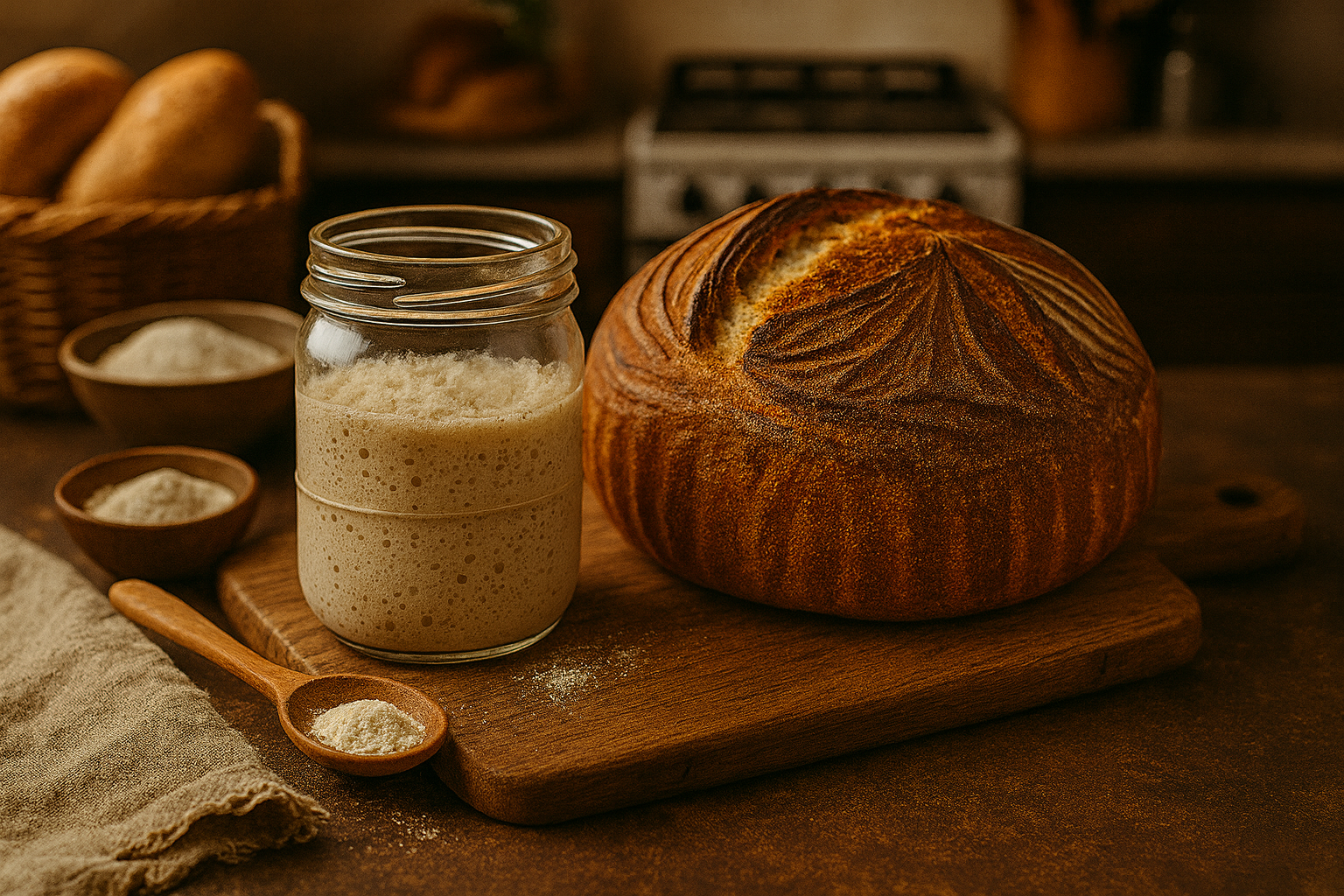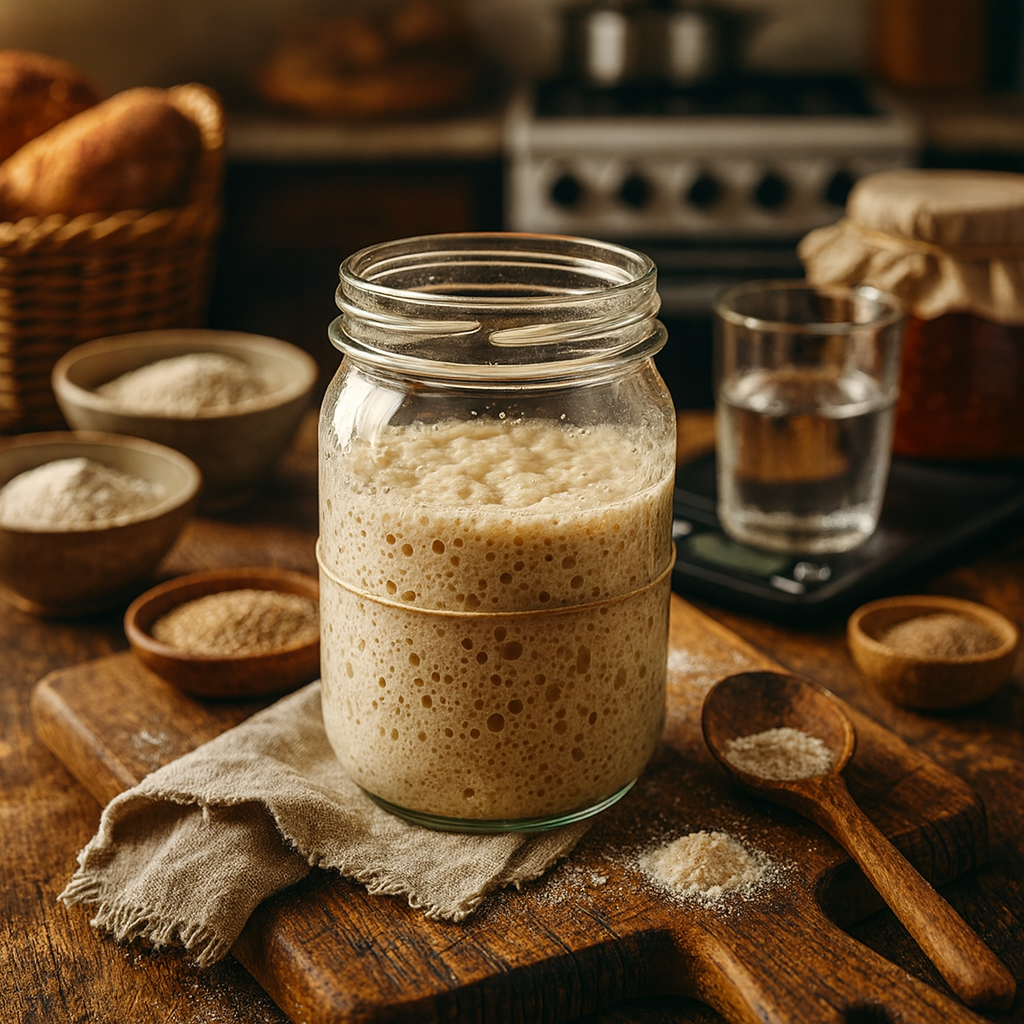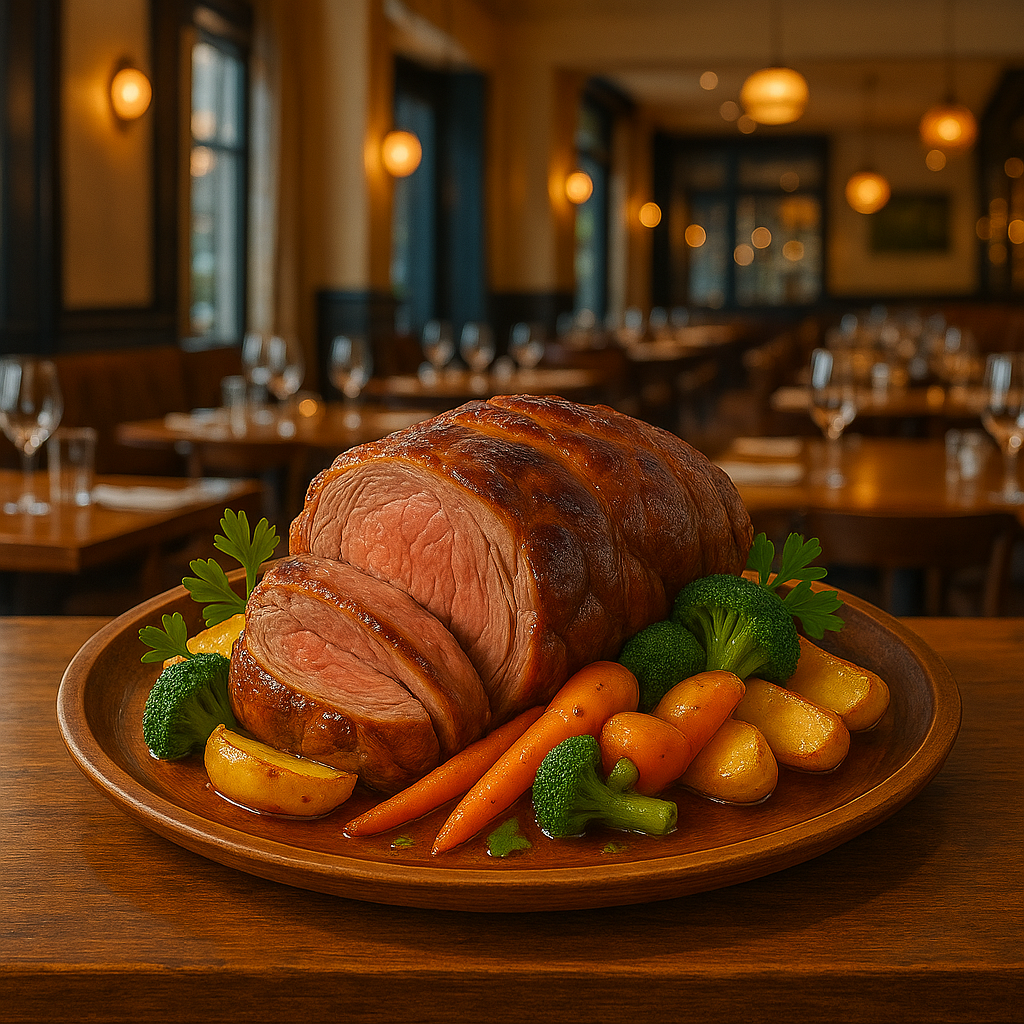Table of Contents
Introduction to Mexican Beer
Mexican beer boasts a rich history that dates back to the Pre-Columbian era, where indigenous cultures brewed beverages using corn. However, the modern brewing scene in Mexico transformed significantly during the 19th century, strongly influenced by European settlers, particularly the Germans and the Spaniards. Today, beer is not only a popular refreshment but also an integral part of Mexican culture, celebrated during various festivities and social gatherings. The craft of brewing in Mexico has evolved, giving rise to a diverse range of beer styles that highlight the country’s unique flavors and regional ingredients.
One of the most recognized types of beer produced in Mexico is lager, particularly the pale lagers such as Corona, Modelo, and Pacifico. These beers are characterized by their light taste and crisp finish, which are highly refreshing, particularly in the warm climate of Mexico. In addition to lagers, there is also a notable presence of ales which, while less prevalent, offer more complex flavors. With the rise of the craft beer movement, many local breweries have introduced a variety of ales, stouts, and IPAs that incorporate traditional ingredients, providing a contemporary twist on classic brewing methods.

Culturally, beer in Mexico serves as a unifier, bringing people together during celebrations, family gatherings, and culinary experiences. It is often paired with traditional dishes, complementing the flavors of foods like tacos, enchiladas, and ceviche. The harmony between beer and cuisine not only enhances the dining experience but also reflects the deep cultural ties rooted in Mexico’s history. As the craft beer scene continues to flourish, it steadily contributes to the diversity and richness of Mexico’s gastronomic landscape, enshrining Mexican beer as a vital component of the nation’s culinary identity.
Understanding Beer Styles and Flavor Profiles
Mexico is renowned for its diverse range of beer styles, each showcasing unique flavor profiles that can significantly enhance the dining experience. Among the most popular styles are light lagers, amber ales, and stouts, each contributing distinct characteristics that harmonize with traditional Mexican dishes.
Light lagers, such as the famous Corona and Pacifico, are incredibly refreshing and often feature crisp notes of malt and mild bitterness. Their clean finish makes them an excellent pairing for lighter fare, including ceviche or fish tacos. The delicate flavor allows the freshness of the ingredients to shine through, making them a preferred choice for outdoor gatherings where such dishes are common.
On the other hand, amber ales offer a more robust flavor experience, characterized by balanced sweetness and hints of caramel and toffee. This style, which includes brands like Victoria and Carta Blanca, complements heavier dishes like enchiladas or mole, adding depth to the overall flavor profile. The moderate bitterness in amber ales can cut through rich sauces, enhancing the taste of the meal.
For those seeking a richer, more complex option, stouts present dark, roasted flavors with notes of chocolate and coffee. While less common in traditional Mexican cuisine, stouts can pair well with desserts like flan or chocolate cake, providing a delightful contrast to sweet flavors. The creamy texture and inherent sweetness of a stout can create a harmonious balance when enjoyed alongside these dishes.
Understanding these beer styles and their flavor profiles allows diners to make informed choices that elevate their culinary experiences. By considering the inherent characteristics of each beer type, one can achieve a successful pairing that not only complements the dish but also enhances the overall dining journey. Choosing the right beer can be just as crucial as selecting the appropriate dish, paving the way for a truly memorable meal.
Pairing Basics: The Art of Food and Beer Pairing
Understanding the fundamentals of food and beer pairing is essential for creating harmonious dining experiences. One of the key principles involves complementary flavors. This means that the flavors in the beer and the dish enhance each other, resulting in a more enjoyable experience. For example, a crisp Mexican lager can pair beautifully with a tangy ceviche, as the citrus notes in the dish and the light, refreshing qualities of the beer balance each other perfectly.
In contrast, the art of pairing can also draw from contrasting tastes. A bold stout might be an unexpected but delightful partner for a spicy mole sauce, where the richness of the beer counters the heat of the dish. This approach opens up a wider range of possibilities, as it allows the diner to explore the interplay between different taste profiles, leading to creative and memorable combinations.
Another vital aspect of pairing is the balance of body and richness. Lighter dishes, such as grilled shrimp tacos, generally pair best with lighter beers, while heartier meals, such as beef barbacoa, call for more robust styles. It is crucial to consider not just the flavors but also the weight of the beer and the food to achieve the ideal pairing. Dishes with rich sauces may overwhelm a delicate pale ale, while a heavy stout could overpower a light salad.
To create your own memorable pairings, consider experimenting with a variety of beer styles and Mexican dishes. Keep in mind personal preferences; some may prefer a sweeter beer with spicy dishes, while others might enjoy bitter notes as a contrast. By timing your explorations and keeping the principles of flavor complementarity, contrast, and balance in mind, you can refine your pairing skills and enjoy a richer dining experience that highlights the beauty of both Mexican cuisine and beer.
Classic Pairings: Beer with Tacos
Tacos, a quintessential element of Mexican cuisine, offer a remarkable diversity of flavors that can be beautifully complemented by an array of Mexican beers. The harmonization of tacos with the right beer enhances both the meal and the overall dining experience. Each type of taco boasts unique characteristics, suggesting specific beer pairings that elevate these beloved dishes.
For instance, fish tacos often feature a light, crispy profile, making them an ideal match for a refreshing lager. The clean and crisp finish of a lager can effectively cut through the richness of fried fish while accentuating the fresh notes of lime and cilantro that often accompany this dish. The carbonation in the lager also aids in cleansing the palate, ensuring that each bite of taco melds seamlessly with the drink.
On the other hand, carnitas tacos, characterized by their savory and rich flavors, pair exceptionally well with a robust amber ale. The maltiness of the beer harmonizes with the succulent pork, while the subtle caramel notes complement the seasoning typically found in the carnitas. This combination not only balances the dish’s richness but also enhances its depth of flavor, creating a truly satisfying experience.
Moreover, for those indulging in spicy chorizo tacos, an IPA (India Pale Ale) can provide the perfect counterbalance. The bitterness of the hops in an IPA contrasts beautifully with the spices used in the chorizo, while the fruity and citrusy notes within the beer help to cool down any heat from the dish. This pairing adds complexity to the meal, showcasing how well-chosen beers can transform a simple taco into a gourmet experience.
Overall, the thoughtful selection of Mexican beers to accompany different kinds of tacos allows for a delightful culinary journey, celebrating the rich heritage of flavors that both food and drink offer.
Exploring Beer and Mole Combinations
Mole, a signature sauce in Mexican cuisine, is celebrated for its complexity, combining various ingredients that contribute to its layered flavor profile. This rich sauce, often prepared with tomatoes, chili peppers, spices, and, in some variations, chocolate, poses a unique challenge when it comes to selecting the ideal beer pairing. The intricate nature of mole, especially varieties like mole poblano, makes thoughtful pairing essential for an enhanced culinary experience.
When considering a pairing with mole poblano, a dark beer such as a stout or porter is often recommended. The roasted malt notes, alongside the slightly sweet undertones of these beers, harmonize beautifully with the depth of flavors found in the mole. The bitterness of the beer can counterbalance the sweetness of the chocolate and the heat of the chilies, allowing each element to shine through. For those who prefer lighter options, a robust amber ale can also complement the richness of mole while adding a caramel-like sweetness that marries well with its ingredients.
In contrast, if the mole dish is lighter or contains fruit elements, a wheat beer with fruity esters might serve as an excellent pairing. The bright, refreshing qualities of a hefewiezen can elevate the meal, providing a pleasing contrast to the heavy sauce. Additionally, the effervescence of a lager may help cut through the richness, refreshing the palate after each bite.
Ultimately, the pairing of beer with mole is a delightful exploration of flavor. The key lies in balancing the sauce’s complex profiles with the appropriate beer. By selecting beers that either harmonize with or contrast the textures and tastes of mole, one can create a harmonious dining experience that showcases the best of both the dish and the beverage.
Regional Dishes and Local Beers: A Match Made in Mexico
Mexico is a country rich in culinary diversity, with each region offering distinct flavors and traditional dishes that reflect local cultures and agricultural practices. This diversity is beautifully complemented by the country’s vibrant beer culture, where regional brews enhance the authenticity of local meals. By exploring the specialties of areas such as Oaxaca, Guadalajara, and the Yucatan, one can appreciate how these regional beers embody the essence of their respective locales.
In Oaxaca, known for its rich culinary heritage, the famous dish Tlayudas, a large crispy tortilla topped with beans, cheese, and various meats, epitomizes the region’s flavors. Pairing it with a local beer such as a light and refreshing Oaxacan lager can elevate this dish, bringing out the earthy notes of the beans while balancing the richness of the cheese. The region’s artisenal craft beers, often using local ingredients, create a harmonious experience that reflects Oaxaca’s agricultural bounty.
Moving to Guadalajara, the home of Birria, a traditional spicy meat stew mostly made with goat or beef, one can find delightful beer pairings that enhance this hearty dish. A robust dark beer, like a locally brewed stout, is recommended, as its richness complements the spiced depth of the Birria. The beer’s bold flavors create contrast and elevate the tasting experience, making each bite more enjoyable.
Lastly, the Yucatan peninsula offers its unique culinary offerings, with Cochinita Pibil as a highlight. This slow-roasted pork dish, marinated in citrus and spices, pairs wonderfully with a refreshing pale ale or a fruity wheat beer. These beers clean the palate, allowing the bold flavors of the Cochinita Pibil to shine through. The use of local ingredients in both the cuisine and the brewing process enhances the connection between the dish and its accompanying beer, illustrating a perfect pairing. Each region’s beers serve not just as a beverage but as a cultural expression, enhancing the overall dining experience.
Vegetarian and Vegan Options: Pairing with Plant-Based Dishes
Mexican cuisine offers a myriad of vegetarian and vegan dishes that are not only rich in flavor but also complement several types of Mexican beers beautifully. The culinary landscape of Mexico incorporates an abundance of fresh vegetables, herbs, grains, and legumes, making it an ideal choice for plant-based diets. When selecting beers to pair with these dishes, it is essential to consider the textures and flavors of both the food and beverages.
For lighter, fresher dishes like Ensalada de Nopal (cactus salad) or Guacamole, a crisp and refreshing pilsner or a light lager is a perfect match. The effervescence and slight bitterness of these beers harmonize well with the tanginess and acidity present in these salads, enhancing the overall dining experience. These types of beers will not overpower the subtle flavors found in vegetables, allowing the freshness to shine through.
On the other hand, heartier vegetarian options such as Chiles Rellenos or Vegetable Tacos can be paired with amber ales or even rich stouts. The caramel notes in amber ales complement roasted vegetables and savory fillings, while stouts, known for their earthy and robust flavors, bring out the richness in dishes filled with beans or mushrooms. These pairings emphasize the comforting aspects of traditional Mexican plant-based meals.
Lastly, for dessert dishes like Flan de Coco, a sweet Mexican coconut flan, consider a sweet stout or a malty brown ale. The sweetness of these beers pairs indulgently with the creamy flavors of the dessert, creating a delightful contrast. By thoughtfully selecting the right beer for each dish, diners can elevate their meals and experience the vibrant flavors that traditional Mexican cuisine has to offer—all while adhering to vegetarian and vegan diets.
Sweet Endings: Pairing Desserts with Beer
While many may not consider beer as a suitable companion for desserts, there is a delightful synergy that can be achieved by thoughtfully pairing Mexican sweets with distinct beer styles. The essence of pairing lies in balancing flavors, particularly when it comes to the inherent sweetness of traditional Mexican desserts such as flan, tres leches cake, and churros. Each of these desserts possesses unique characteristics that can be enhanced by specific beer selections.
Flan, a creamy caramel custard, is often enjoyed for its rich sweetness and velvety texture. To complement the smoothness of the flan, a smooth, caramel lager or a light imperial stout can be an excellent choice. These beers tend to have malt-forward profiles, which harmonize beautifully with the caramel notes in the flan, creating a well-rounded tasting experience. The rich body of an imperial stout can amplify the dessert’s flavors without overwhelming them, leading to a satisfying finale of the meal.
Another beloved dessert, tres leches cake, is known for its moist texture and sweet milky flavor. Pairing this dessert with a fruity, light beer like a wheat beer or a fruit-infused lager can enhance the taste. The effervescence and subtle fruit notes found in these beers can provide a refreshing contrast to the dense creaminess of the tres leches cake. The carbonation cuts through the richness, balancing the flavors while allowing each element to shine.
Churros, typically served with a side of chocolate sauce, present a different opportunity for pairing with beer. A chocolate stout or a brown ale can be an exceptional match for churros, as the chocolate notes in the beer echo the dessert’s dipping sauce. This pairing emphasizes the depth of flavor created by both the churros and the stout, offering a delightful end to any Mexican meal. Thus, exploring dessert and beer pairings can open a realm of delightful combinations that elevate the dining experience.
Conclusion: Crafting Your Perfect Meal
In our exploration of the delightful pairing of Mexican beers with traditional Mexican dishes, we have uncovered a harmonious relationship that elevates both the beverage and the cuisine. Mexican beers, with their diverse flavors and styles, complement the rich and varied profile of Mexican dishes, offering a culinary experience that is both authentic and satisfying. Whether it be the crisp notes of a pale lager or the robust flavor of a stout, each beer has something unique to contribute to the dining experience.
As we have discussed, the key to crafting the perfect meal lies in understanding the interplay of flavors. For instance, light lagers tend to pair beautifully with fresh seafood tacos, while darker ales can enhance the savory depth of mole dishes. Recognizing these fundamentals can guide aficionados and newcomers alike to explore their personal preferences while embracing traditional principles of food and beer pairing. The palate is a canvas, and Mexican cuisine provides an exquisite palette of flavors with which to experiment.
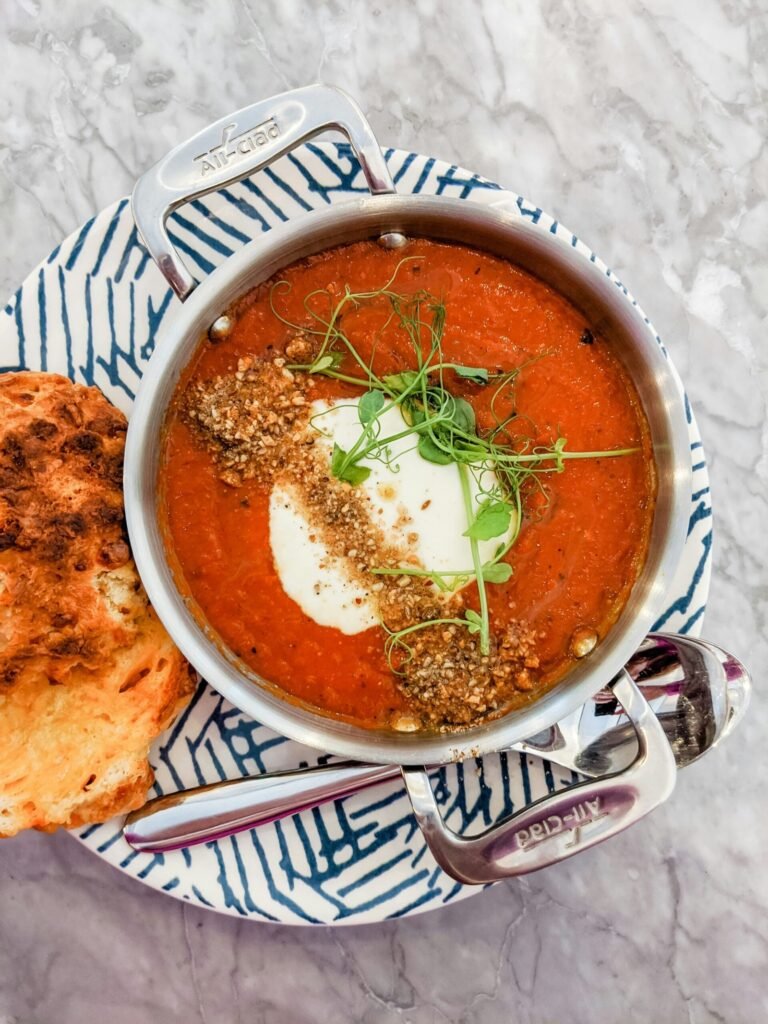
We encourage readers to take these concepts into the kitchen and experiment with various combinations. Share your experiences, favorite pairings, and any surprising discoveries you make along the way. Engaging with others who share a love for Mexican food and beer can deepen your appreciation of these culinary treasures. We hope to cultivate a vibrant community where food enthusiasts can exchange ideas, recommendations, and stories centered around the enjoyment of these beloved staples of Mexican culture. By doing so, we celebrate the rich heritage and creativity that characterize both Mexican cuisine and its accompanying beers.

